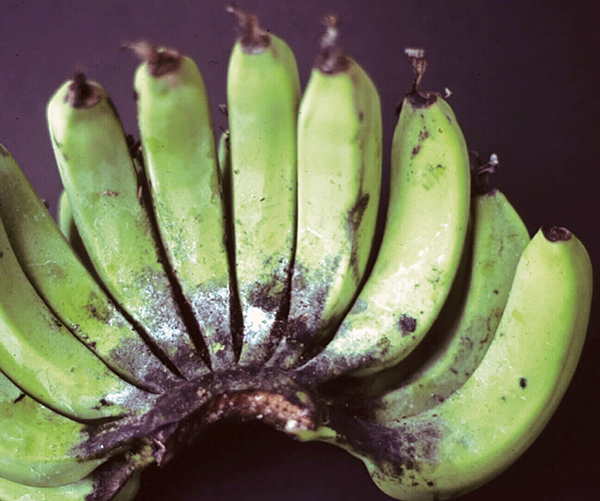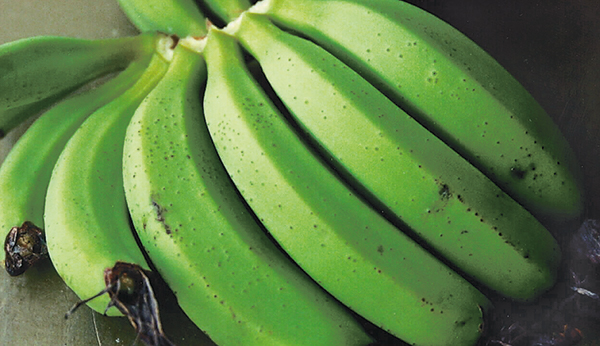Spots on fruit
Banana freckle
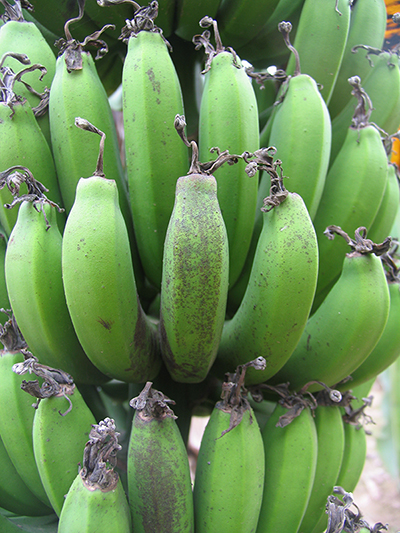
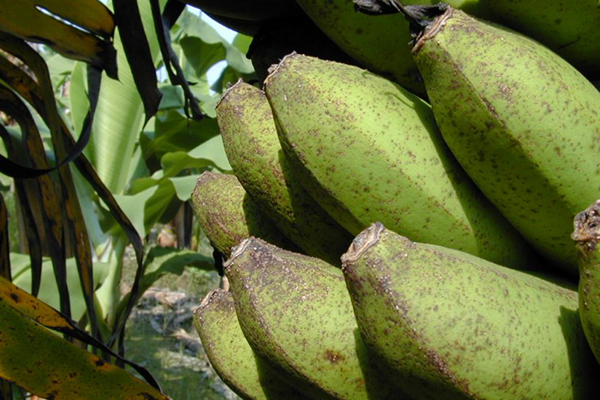
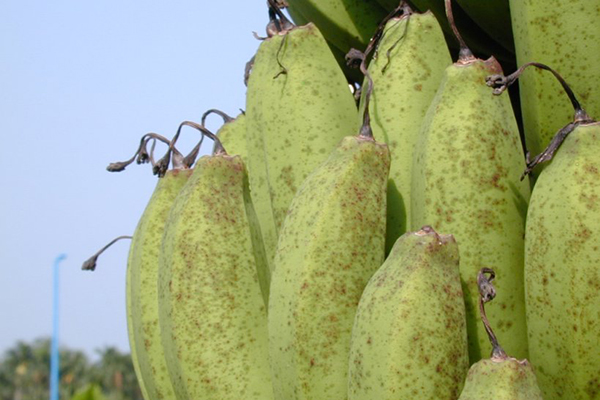
Biosecurity Alert
Cause: Banana freckle is a leaf and fruit spotting disease of banana and is caused by several species of the fungus Phyllosticta, some of which are exotic to Australia. The disease that affects Cavendish bananas is caused by the race Phyllosticta cavendishii, with the first incursion detected in Australia’s Northern Territory in 2013. This race can also affect non-Cavendish varieties.
Symptoms: The most distinguishing symptom of the disease are dark raised spots, and a sandpaper feel to infected (spotted) leaves and fruit. On fruit, individual spots first appear as minute, reddish-brown flecks surrounded by a halo of dark-green, water-soaked tissue.
Biosecurity: Both commercial and backyard banana growers should regularly monitor their banana plants for symptoms of the disease. If you see symptoms or anything unusual call Biosecurity Queensland on 13 25 23 or the Exotic Plant Pest Hotline on 1800 084 881 immediately.
Movement restrictions are in place to stop the movement of plants, plant material and fruit from infected or suspect premises. Further, Queensland, New South Wales and Western Australia prohibit the entry of banana fruit and plant material from the Northern Territory, with quarantine checkpoints at some state borders.
More info:
Plant Health Australia
Queensland Government
Northern Territory Government
Australian Government
ABGC
Symptoms of banana freckle on banana leaves (better bananas)
Banana spotting bug
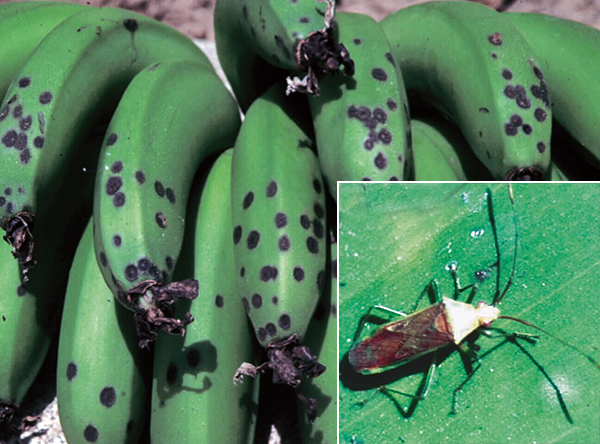
Cause: Feeding (sucking) by banana spotting bug, Amblypelta lutescens lutescens, usually on the exposed outer curve of the fingers.
Solution: Damage is more severe on blocks adjacent to rainforest. No specific treatments required. If more than 5% of bunches are affected, spot spray.
Fruit speckle
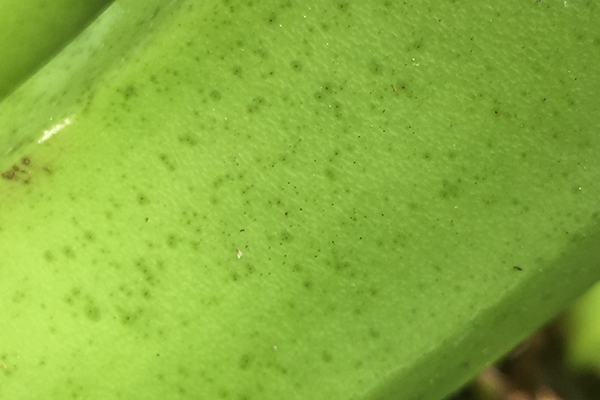
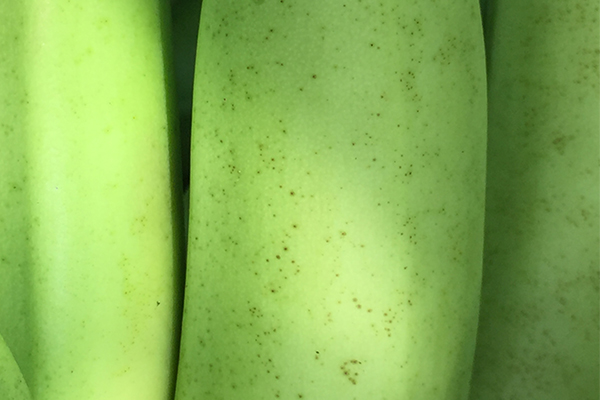
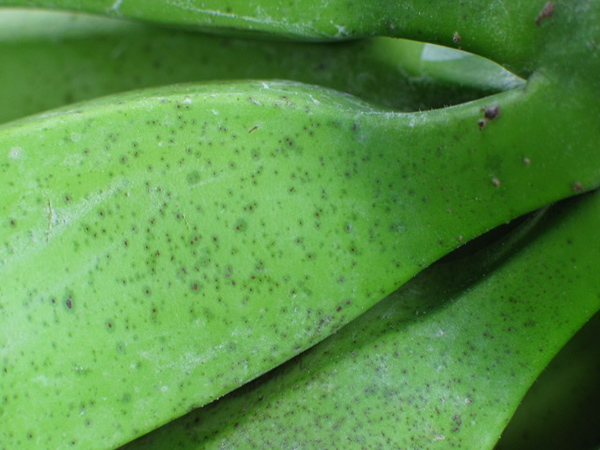
Cause: Caused by multiple species of fungi including Colletotrichum musae, Fusarium oxysporum and Fusarium semitectum. Spores are produced in large numbers on dead leaf material during wet conditions and are spread in air currents to the fruit.
Solution: Fruit speckle is generally a minor disease that can become problematic in seasonally unfavourable weather conditions. Under normal conditions, a fungicide leaf spot spray program should assist and keep levels low.
More info:
Deightoniella spot
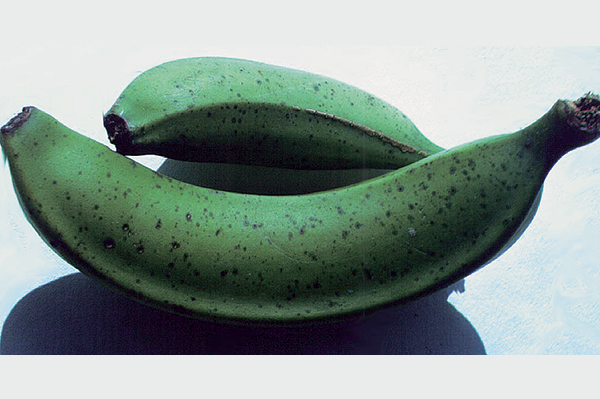
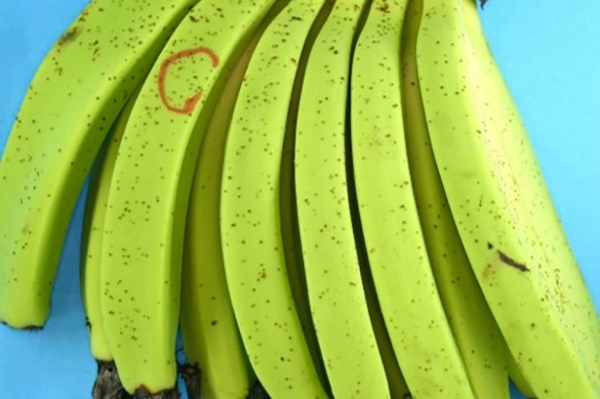
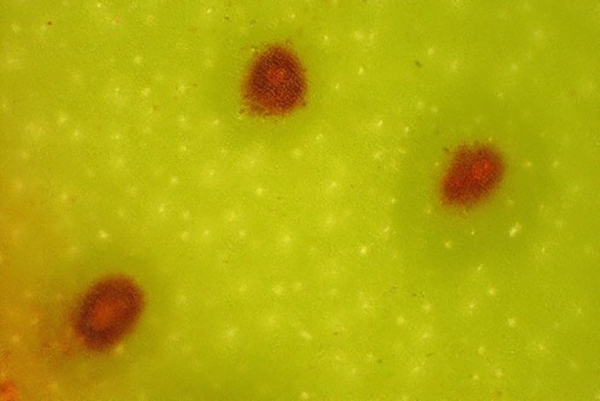
Cause: The fungus Deightoniella torulosa. Spores are produced in large numbers on dead leaf material during wet conditions and are spread in air currents to the fruit. Spots are typically larger than fruit speckle (2-4mm) and sunken on green fruit.
Solution: Deightoniella is generally a minor disease in well managed plantations that use a full leap spot control program.
More info:
A guide to identifying fungal fruit diseases
Fruit flies
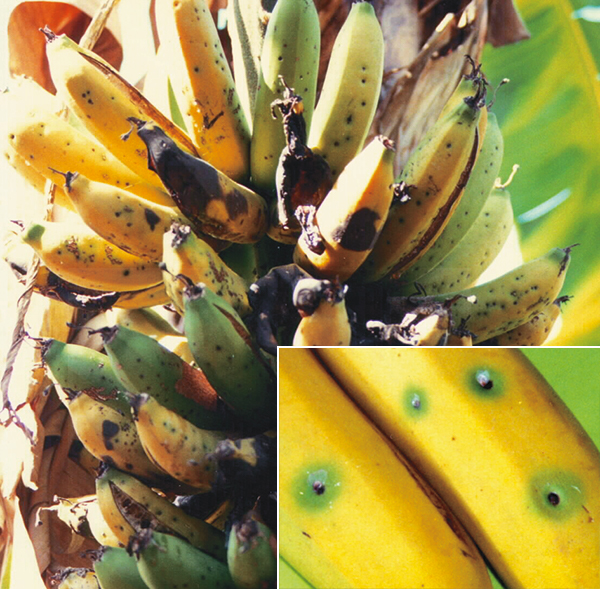
Cause: Banana fruit fly, Bactrocera musae, and Queensland fruit fly, Bactrocera tryoni, laying eggs (stinging) in the pulp of banana just below the skin. The banana fruit fly can sting green fruit but the Queensland fruit fly only stings ripening or yellow fruit.
Solution: Chemical control should not be required since fruit is harvested at the hard green stage before either of the fruit flies can complete their life cycles. Do not leave over ripe fruit in the field. If mixed ripe fruit causes hot spots in the plantation, spot spray with an appropriate chemical.
Flower thrips
Cause: Scarring from egg-laying by flower thrips, Thrips hawaiiensis on young fruit when still covered by the bracts.
Solution: Insecticide injection at bell emergence for control of scab moth also controls flower thrips.
More info:
Banana flower thrips – general information
Spray burn
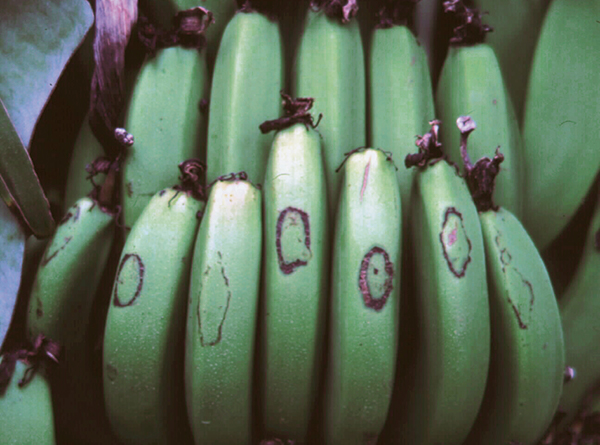
Cause: Spraying with excessive volumes of chemical or inappropriate chemical use.
Solution: Use only registered chemicals and apply according to the label directions.
Sooty blotch
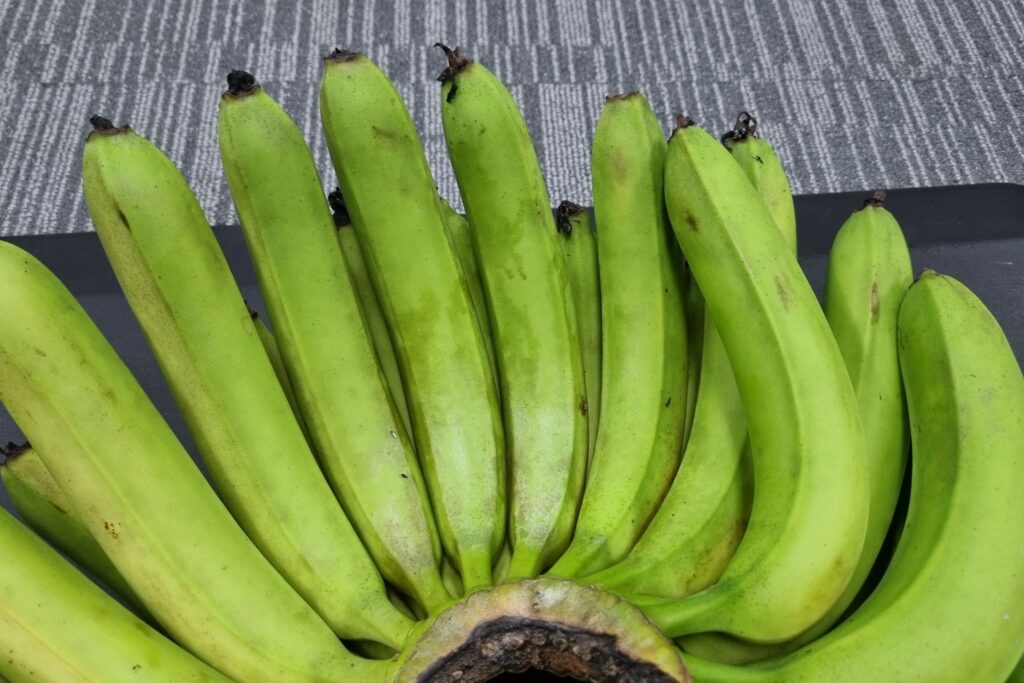
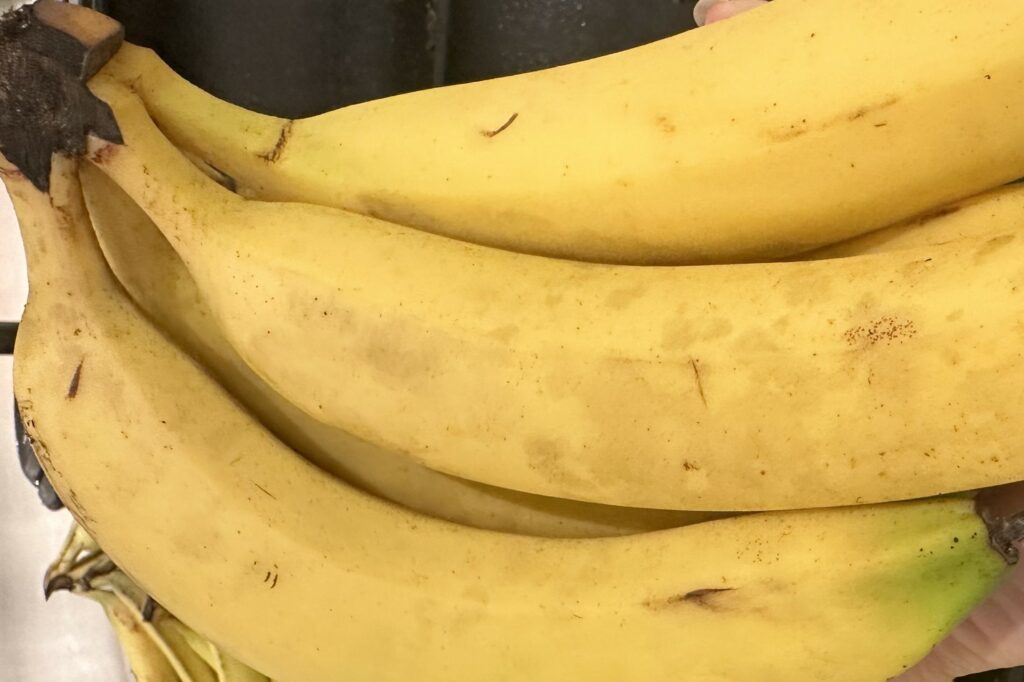
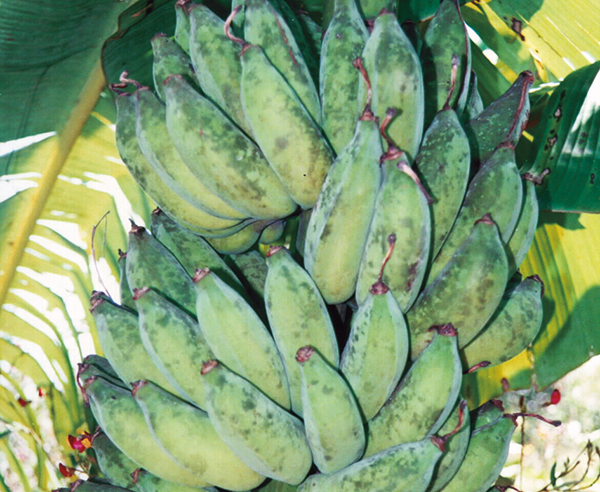
Cause: Multiple fungal organisms are associated with the symptoms. Causes superficial damage to the banana peel and typical symptoms are charcoal-like smudges that are dark and irregular in shape.
Solution: Lady Finger and Ducasse are more prone to sooty blotch than Cavendish-type bananas. A post-harvest dip of sodium hypochlorite at 100 ppm for 5 minutes followed by immediate rinsing, is highly effective in removing sooty blotch.
More info:
Sooty mould
